Surprisingly, even in the 21st century, many people are still unfamiliar with freestanding bathtubs and continue to focus on built-in and corner bathtubs. However, as modern bathroom design needs evolve, more homeowners are leaning towards freestanding for their convenience and aesthetic appeal. So, what exactly is a freestanding bathtub? What are its attractive features? In this article, Giving Tree Home will provide a comprehensive overview of freestanding bathtubs, including their characteristics, types, and usage. So, let's dive in!
What Is a Freestanding Bathtub
Freestanding, also known as a standalone, as the name suggests, a type of bathtub that exists independently within a space without relying on walls or other parts of the bathroom. This description might seem a bit abstract, so to make it clearer, let’s compare freestanding with built-in and corner for a more concrete explanation.
-

Freestanding
As shown in the image above, a freestanding bathtub is completely exposed on all sides, which means it can be placed anywhere in the bathroom as long as there is a suitable drainage and plumbing connection for installation. Freestanding bathtubs come in a wide range of materials, including cast iron, ceramic, acrylic, and solid surface, each offering different visual effects and user experiences.
-

Built-in
Built-in , also known as a drop-in, is typically embedded within the walls or structure of the bathroom. As shown in the image, you can only view the bathtub from above, with the other sides being hidden. The installation process for built-in bathtubs can be more complex and often requires a professional remodeling company, as it involves clearing and handling all related plumbing work.
-

Corner
A corner bathtub is a variant of the built-in bathtub, usually installed in the corner of the bathroom and shaped like a quarter-circle. This design is often used in hotels or smaller bathrooms, optimizing space utilization and making it an ideal choice for tight spaces.
Is a Freestanding Bathtub Worth Buying
Freestanding bathtubs offer several distinct pros and cons due to their design and installation methods. One of the most notable pros is their strong visual appeal. Freestanding bathtubs are crafted using molds, which means that the aesthetic quality of the tub is largely dependent on the design of the mold. This allows for the creation of visually stunning bathtubs that can be placed anywhere in a space, even in the center of a bedroom. They can significantly enhance the overall beauty of a room, often making them a preferred choice for homeowners willing to invest more for a striking centerpiece.
Another pros is the ease of installation. Most freestanding bathtubs weigh between 50-500 lbs. Acrylic bathtubs are typically lighter, often under 100 lbs., while solid surface bathtubs range from 200-300 lbs., and stone bathtubs can be around 500 lbs. Despite these weight differences, freestanding bathtubs are relatively easy to install since they only need to be connected to existing plumbing, avoiding the need for complex structural modifications. This makes them a convenient option for both new installations and renovations.
However, freestanding bathtubs also come with some drawbacks. For clawfoot bathtubs, the relatively small contact area with the floor can exert significant pressure, especially when the tub is filled with water and supports a person's weight. As a result, additional construction and costs may be necessary to reinforce the floor for clawfoot bathtubs.
Additionally, while the fully exposed design allows the bathtub to be showcased as a piece of art, it also means that more surface area needs to be cleaned, not just the interior. This means you need to spend some time cleaning and maintaining your tub regularly.
If the pros of a freestanding bathtub happen to be what you value and you can accept its cons, then it is strongly recommended that you buy a freestanding bathtub. The following 4 are popular choices on Giving Tree Home:
Discount Code: GT058— Enjoy 12% off
-
67" Cherry Red Solid Surface Bathtub
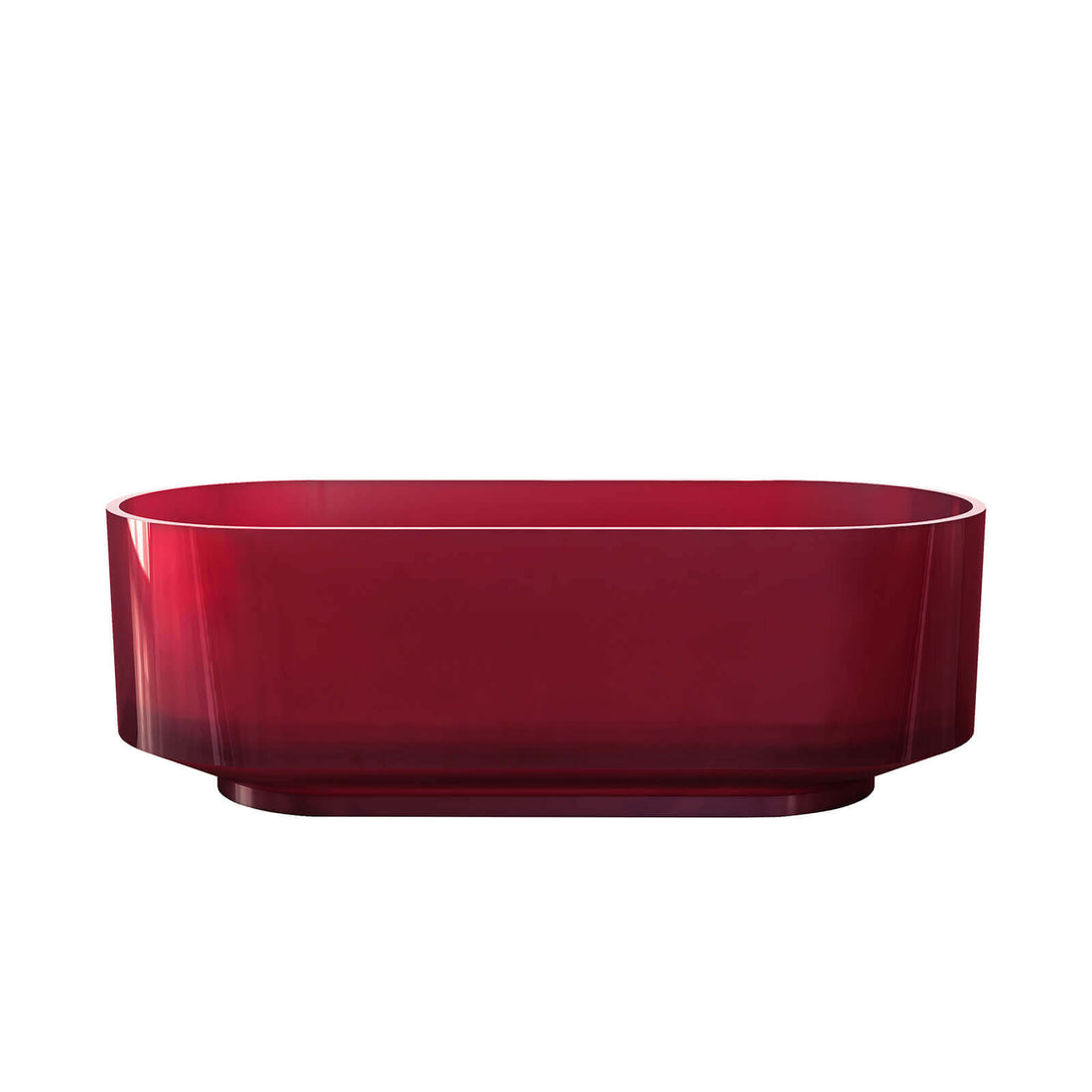
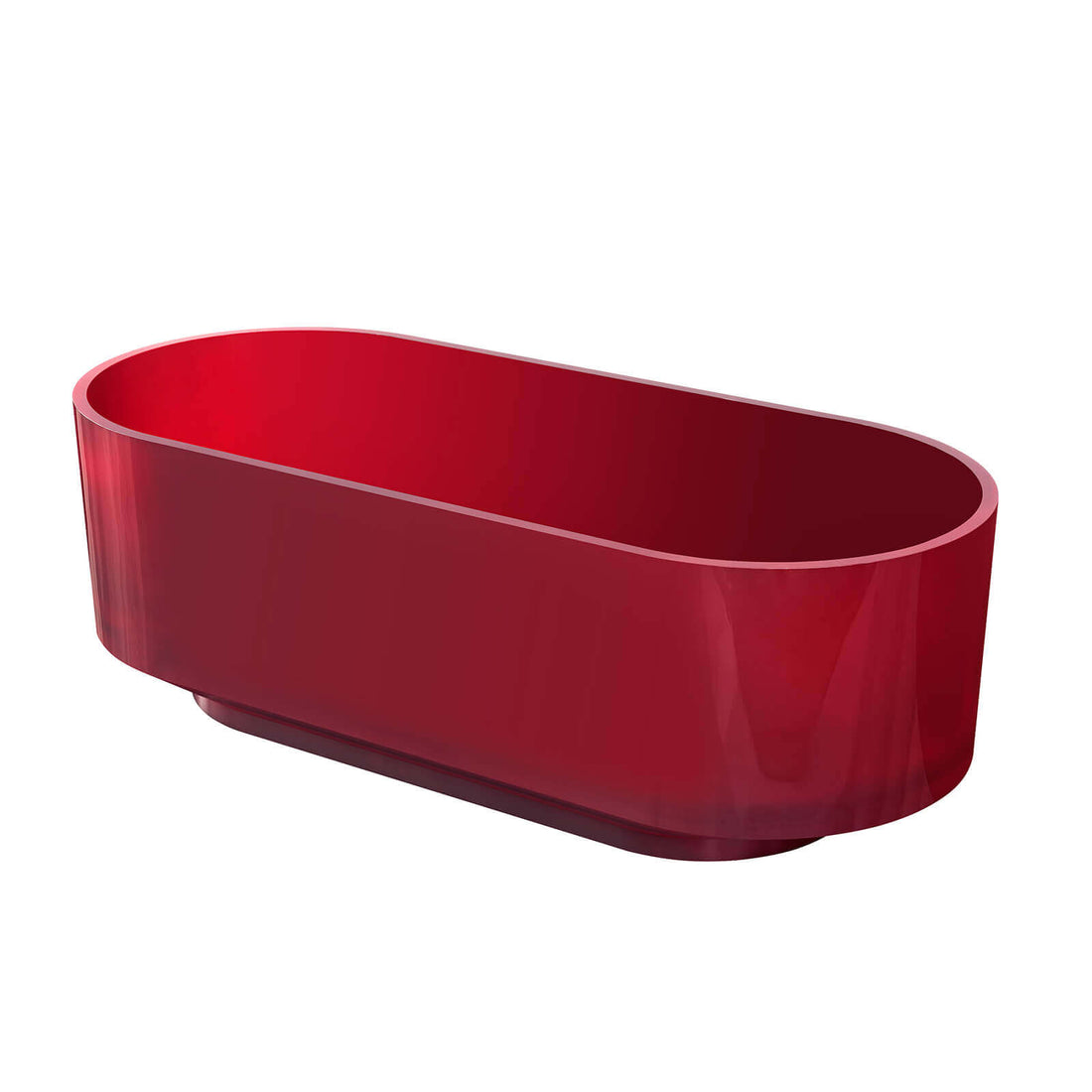 67" Cherry Red Solid Surface Bathtub
67" Cherry Red Solid Surface Bathtub- Regular price
-
$3,999.00 - Regular price
-
- Sale price
-
$3,999.00
Quick view
-
67" Pine-Like Grain Solid Surface Bathtub
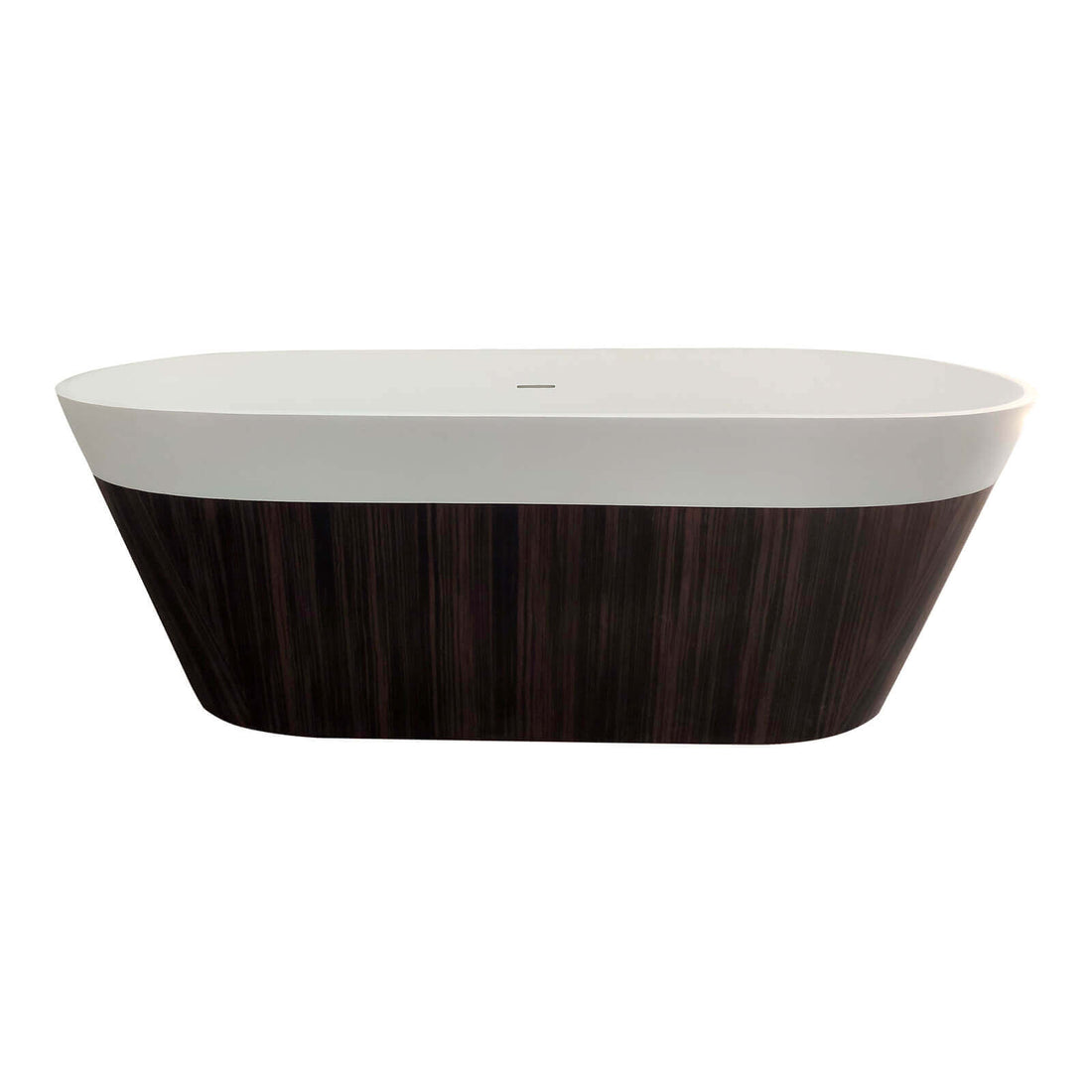
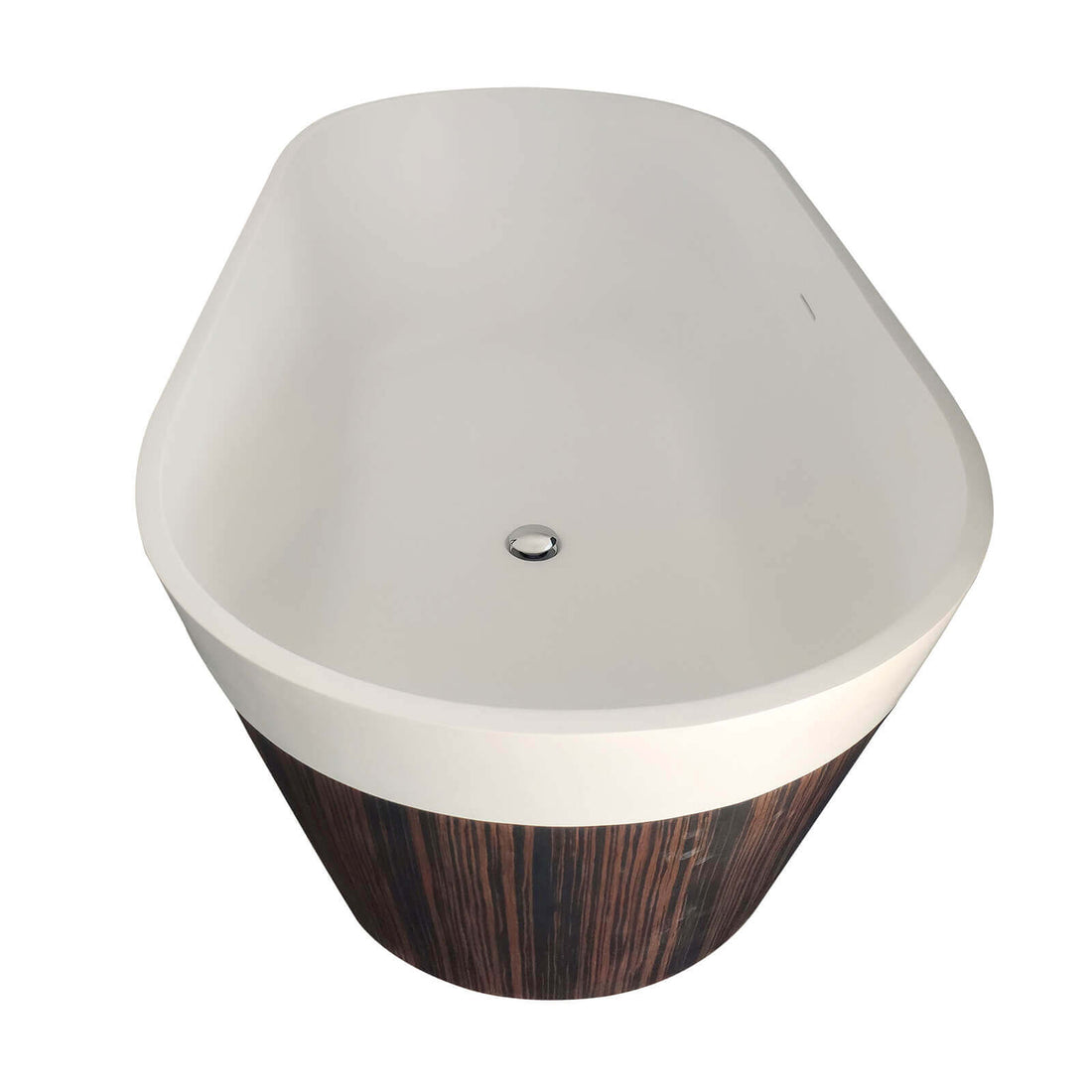 67" Pine-Like Grain Solid Surface Bathtub
67" Pine-Like Grain Solid Surface Bathtub- Regular price
-
$3,589.00 - Regular price
-
- Sale price
-
$3,589.00
Quick view
-
63'' Rectangular Solid Surface Bathtub
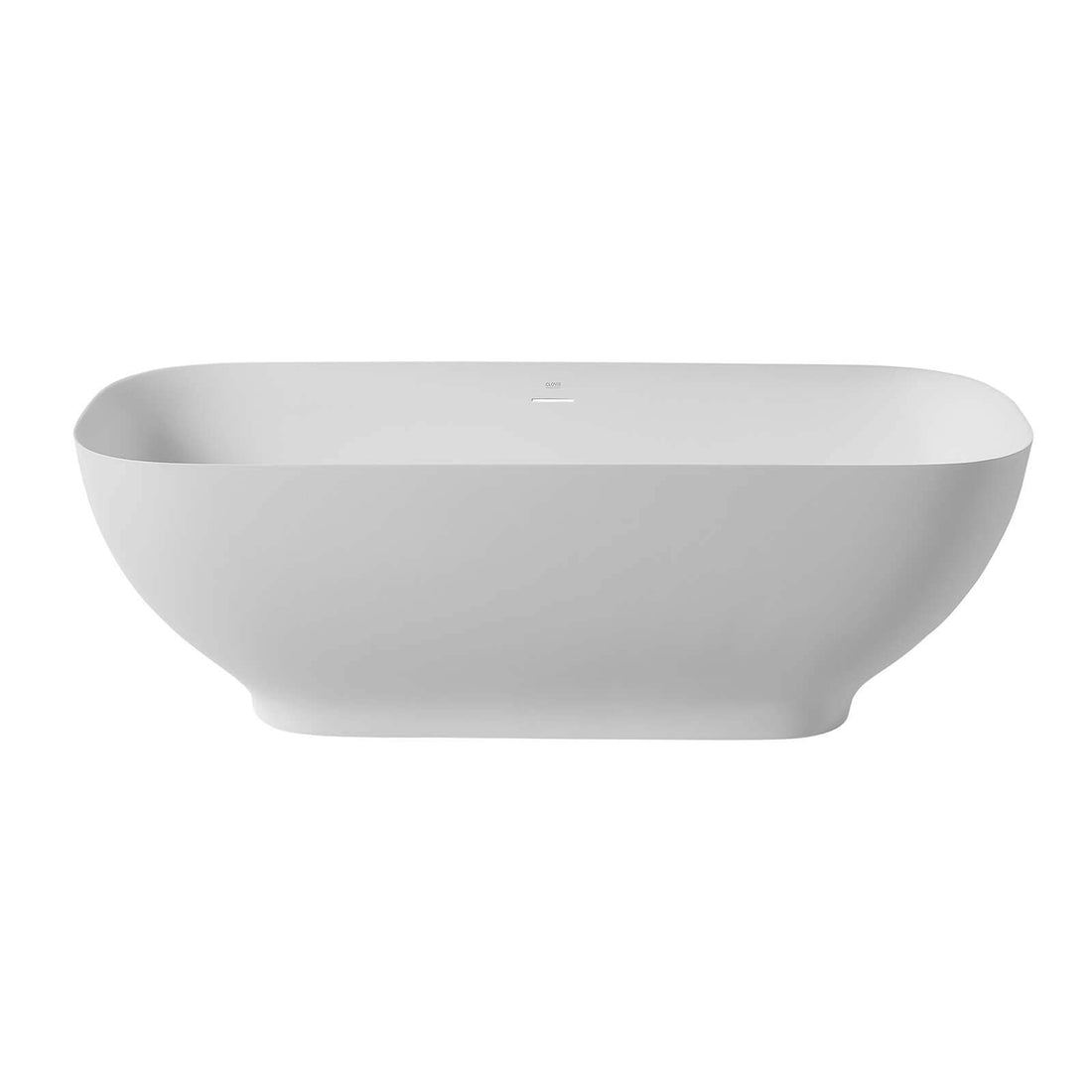
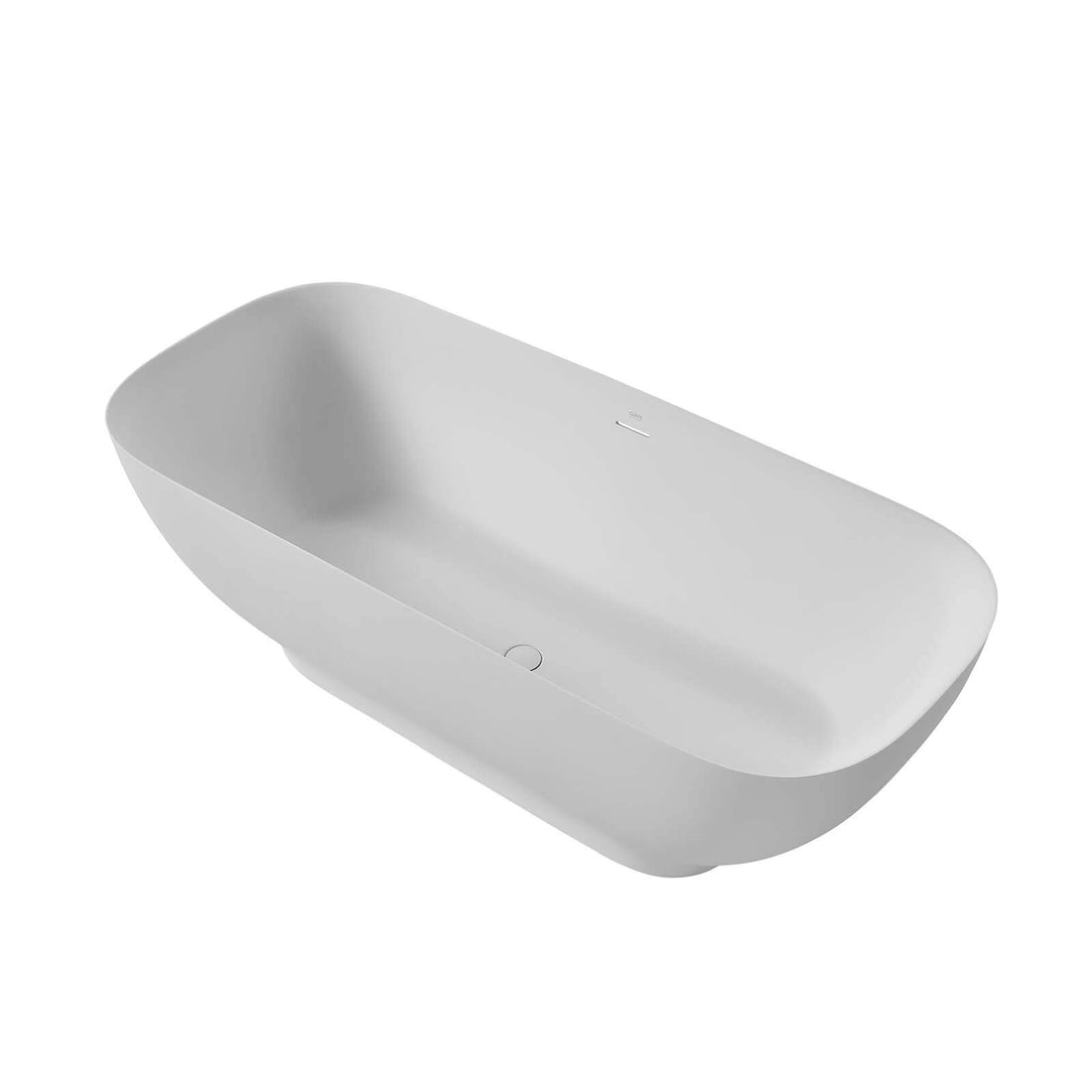 63'' Rectangular Solid Surface Bathtub
63'' Rectangular Solid Surface Bathtub- Regular price
-
$2,399.99 - Regular price
-
$2,699.99 - Sale price
-
$2,399.99
Quick view
-
66" Matte White Egg Solid Surface Bathtub
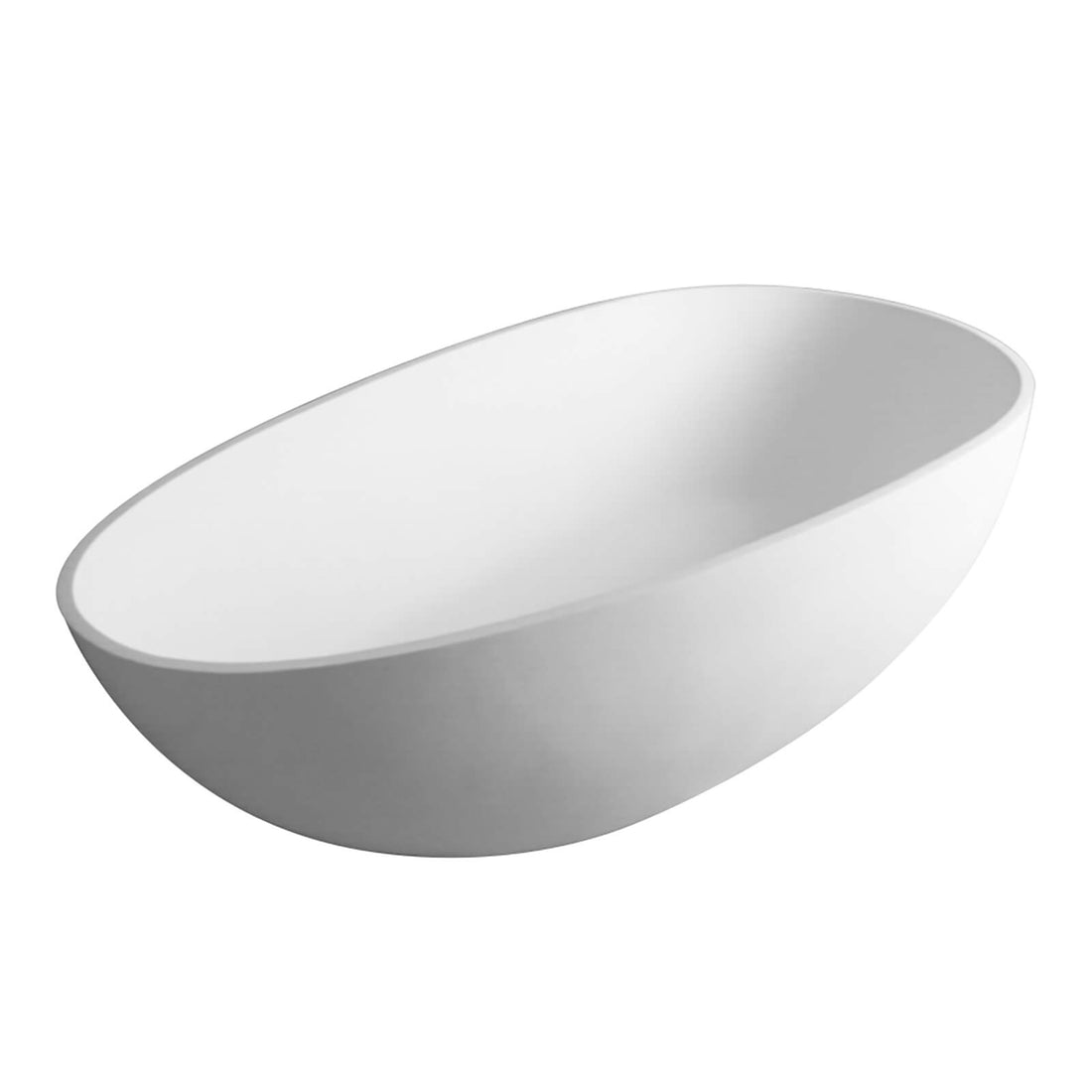
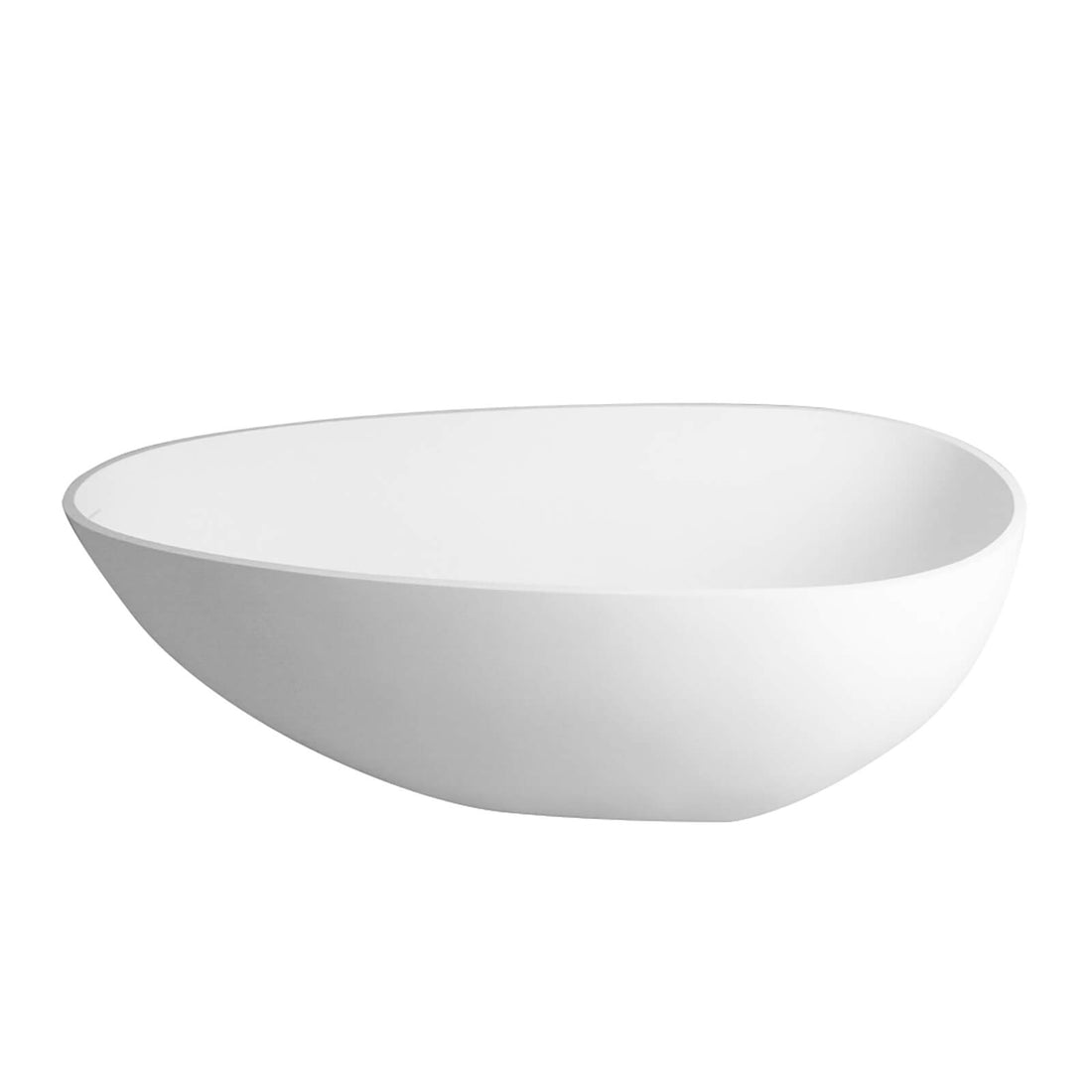 66" Matte White Egg Solid Surface Bathtub
66" Matte White Egg Solid Surface Bathtub- Regular price
-
$2,530.00 - Regular price
-
$1,199.00 - Sale price
-
$2,530.00
Quick view
What Should You Consider When Buying a Freestanding Bathtub
Based on Appearance
Depending on individual tastes and needs, there are various styles of freestanding bathtubs to choose from. Classic black and white models remain the most popular, as they can blend with almost any bathroom décor. For those seeking a more atmospheric touch, options like cherry red, concrete gray, or even transparent designs can be considered.
In addition to color, the shape of the bathtub is a significant factor. For larger bathrooms, oval and round shapes are ideal, serving as focal points in the space rather than being placed against the wall. For smaller bathrooms, rectangular and square designs are more suitable as they can align with the walls, maximizing space efficiency. Trendsetters might prefer egg-shaped or slipper designs, which not only fit modern aesthetics but also feature ergonomic backrests for added comfort.
Additionally, some homeowners may choose details like clawfoot, pedestal, or flat-bottom designs. These details not only impact the bathtub's appearance but also help it harmonize with the overall bathroom style.
Based on Material
Beyond aesthetics, the material of the freestanding bathtub affects its appearance, user experience, and cost. Acrylic bathtubs are often considered the most cost-effective choice due to their lightweight and excellent insulation properties, with prices typically under $1,000.
Solid surface bathtubs represent a more luxurious option, generally costing between $1,500 and $2,500. For homeowners seeking high-end bathroom renovations, this is a worthwhile investment due to its longer lifespan and repairability, with solid surface tubs potentially lasting around 15 years.
Other options include cast iron and copper bathtubs. Though less common, these can be ideal for those pursuing a vintage bathroom look. With proper maintenance, they can last over 50 years, though they come at a higher cost.
Based on Size
When selecting a freestanding bathtub, it’s crucial to consider its size to ensure compatibility with your bathroom. Although freestanding bathtubs can be installed freely, placing a large tub in a small bathroom is impractical as it can take up significant space and diminish the bathroom's functionality.
For average-sized bathrooms, a tub in the range of 61"-68" is recommended, as this is considered a standard size for freestanding bathtubs. Similarly, size considerations are important when purchasing other types of bathtubs to avoid high shipping costs due to incorrect sizing. To avoid mistakes, consider reading articles such as "What is the Standard Bathtub Size and How to Choose" and "How to Measure a Bathtub and What Dimensions Are Needed" before making your purchase.
Precautions for Using a Freestanding Bathtub
Although a freestanding bathtub is a worthwhile long-term investment, there are a few key considerations to keep in mind to extend its lifespan and enhance your experience.
First is the selection of the installation location. While freestanding bathtubs are favored for their flexibility, placing them haphazardly could affect the overall layout and functionality of your bathroom. As a large piece of furniture, the bathtub should be positioned where it won’t obstruct other furniture or pathways, ensuring a smooth flow of movement in the bathroom.
Secondly, since freestanding bathtubs are not attached to the wall, it’s essential to ensure that the floor is level and sturdy during installation to prevent shifting or tilting during use. Additionally, be mindful of the compatibility of the plumbing and drainage system, and regularly check for blockages or leaks to ensure smooth operation.
In daily use, you should choose appropriate cleaning methods and agents based on the bathtub material, avoiding strong acidic or alkaline products. Most freestanding bathtubs have a smooth surface, but exposure to corrosive liquids could damage it. If you've purchased a solid surface bathtub, it has some self-repair capabilities. For minor surface imperfections, you can gently sand the affected area with sandpaper to restore the surface. For detailed instructions, refer to "How to Repair Surface Scratches on a Stone Resin Bathtub".
Ending
Freestanding bathtubs offer a perfect blend of style, functionality, and relaxation. Whether you prefer a vintage clawfoot or a modern oval design, there is a freestanding bathtub that can transform your bathroom into a luxurious retreat. Consider the various types, materials, and factors involved when purchasing a freestanding bathtub to ensure it meets your specific needs and preferences. With the right freestanding bathtub, you can create a tranquil haven where you can unwind and rejuvenate after a long day.
More Ideas
-

Double Sink vs Single Sink Vanity: Which Fits Your Bathroom Best
Compare double sink vs single sink vanity to find the perfect fit for your bathroom. Determine your bathroom size, costs, and intended use before you remodel.
-

When Is the Best Time to Take a Shower?
For many of us, showering is more than just washing up—it’s a small daily ritual that affects how we sleep, how our skin feels, and even our overall well-being. But...
-

What Is a Shower Pan—and Do You Really Need One?
If you’re getting ready to renovate your bathroom on your own, you’ve probably run into a jungle of confusing terms. The same product may have multiple names, different materials come...
-

Shower Pan Installation: 6 Steps from Selection to Finish
Have you ever experienced this: after taking a shower, your bathroom floor is either soaked or has a puddle of water? It’s not just a hassle to clean—it’s also a...
-

Shower Pan Size Guide: Must-Know Dimensions Before You Buy
When planning a shower, most of us immediately think about style and layout. But the details that truly shape your daily experience often lie beneath your feet—that’s where the shower...
-

What’s the Best Material for a Vessel Sink?
When it comes to designing a bathroom, you might not give much thought to the material of your sink. After all, traditional under-mount sinks are usually ceramic, leaving little room...

















